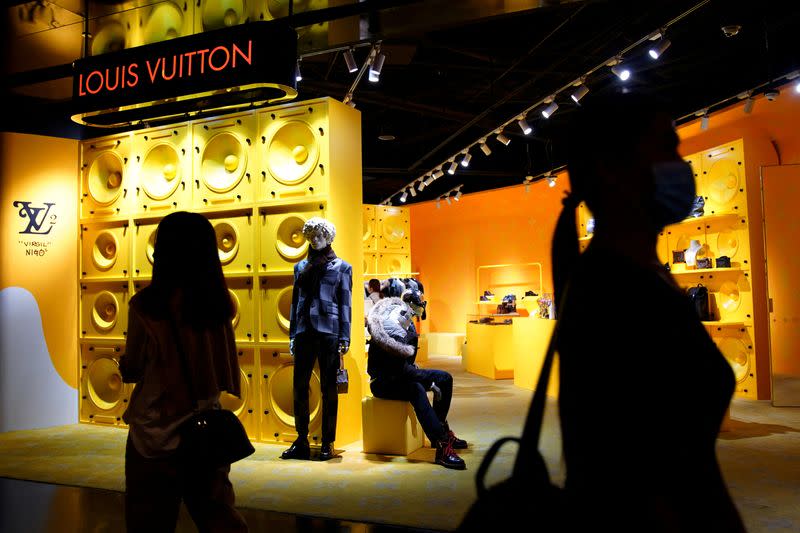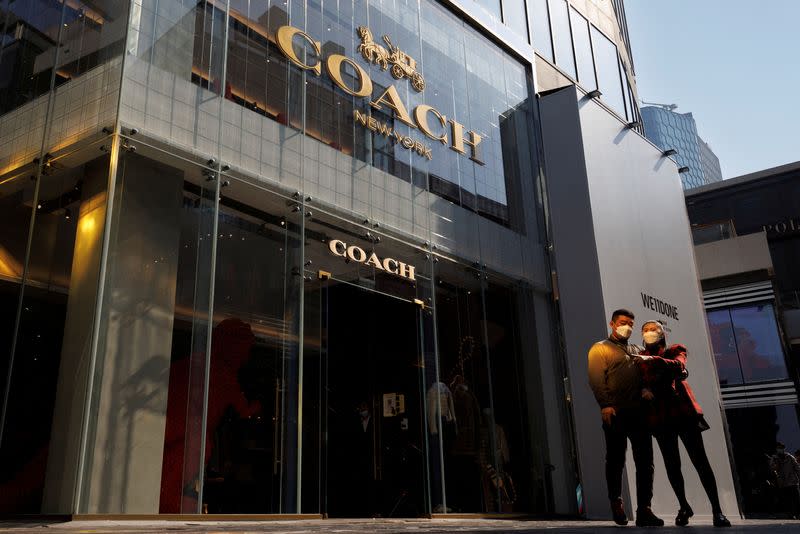By Alun John and Ankur Banerjee
LONDON/SINGAPORE (Reuters) - Investors are getting more bang for their buck this year by buying European companies with a focus on China than buying Chinese companies themselves, a sign of the unevenness of China's pandemic recovery and geopolitical concerns.
Late last year, China dismantled its strict zero-COVID policy, helping its economy rebound by a faster-than-expected 4.5% in the first quarter of 2023.
The recovery has been patchy, however. Pent-up consumer demand has boosted the services sector, but manufacturing has lagged. Property and tech have been bruised by regulatory crack-downs, indebted local governments have little spare cash to spend, and youth unemployment is well above the national average.
"Certainly people are spending, the consumption side is real. But there is not much more beyond that," Geoff Yu, senior EMEA market strategist at BNY Mellon, said.
Investors must now hunt for more nuanced ways to trade China's post-COVID economy.
"We are looking into ways to express this (China recovery) theme in our portfolio rather than just say 'let's go long China equity'. That trade is too simple, and there are a lot of uncertainties," said Wang Taosha, Fidelity portfolio manager.
"The old playbook, where Chinese recoveries were associated with a rebound in construction and housing, is not necessarily the case this time, and obviously there is the geopolitical overhang and the previous rounds of domestic regulatory reforms that were applied to the tech and education sector."
Wang is positive on China, but her preferred route is via the luxury sector, mainly due to the savings built up during the pandemic, particularly by the wealthy, and pent-up demand for travel.
Many potential beneficiaries are listed in Europe, where nearly 2% of euro zone GDP is exposed to China, compared with just over 0.5% for the U.S., according to Barclays.
Europe's STOXX 600 index is up around 10% year-to-date, outperforming most other major indices. A milder winter that helped cut energy costs has also helped drive it towards 14-month highs.
China's onshore blue-chip index is up 5% this year. But a "Shadow China" basket, calculated by Jefferies, which includes European companies that derive over 10% of their revenues from China, has risen 33% since the start of November - roughly when China began reopening - outperforming MSCI's index of developed European markets by 5.3%.
One beneficiary is LVMH, the first European company to top $500 billion in market value, with management flagging China's reopening as a major driver of both its recent growth and expansion plans.



